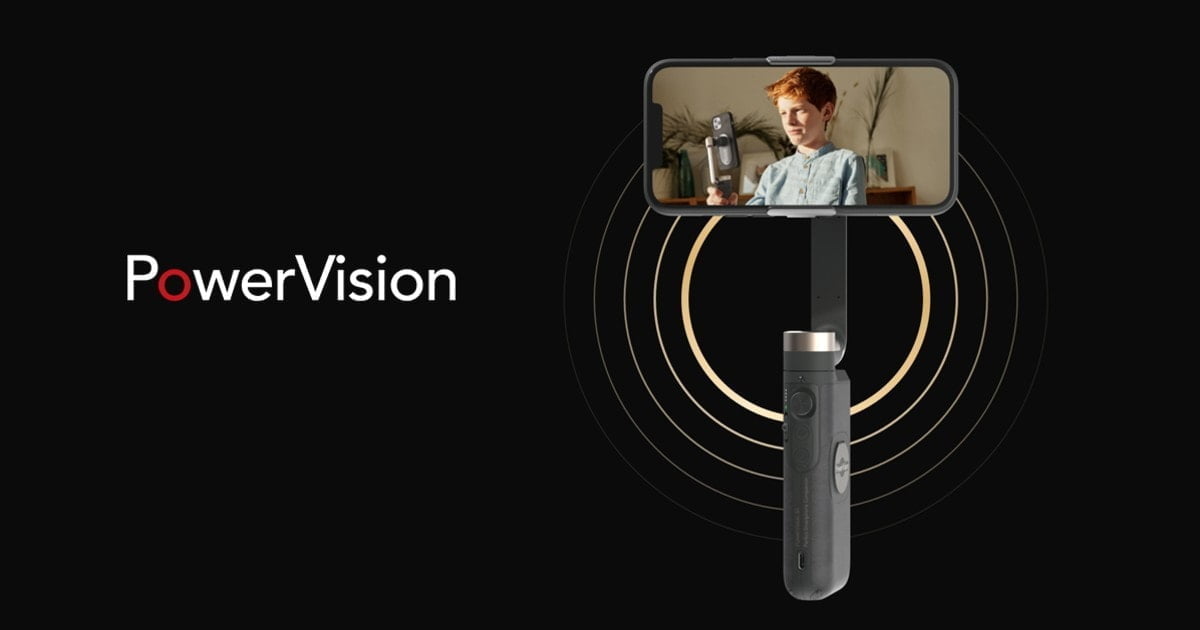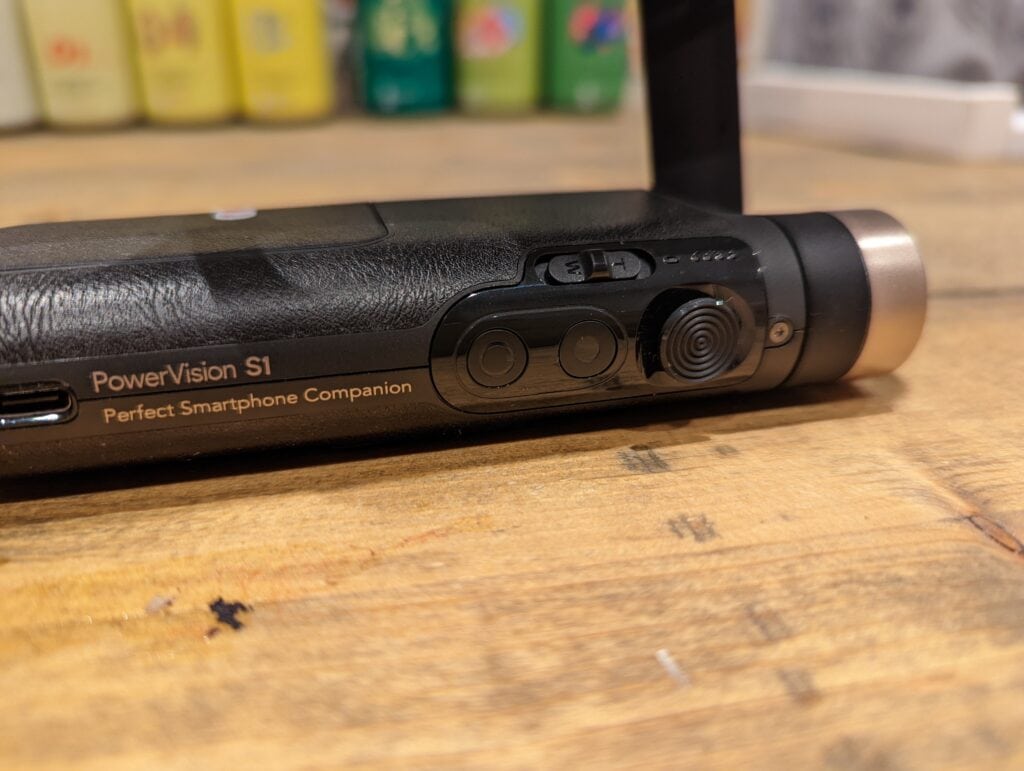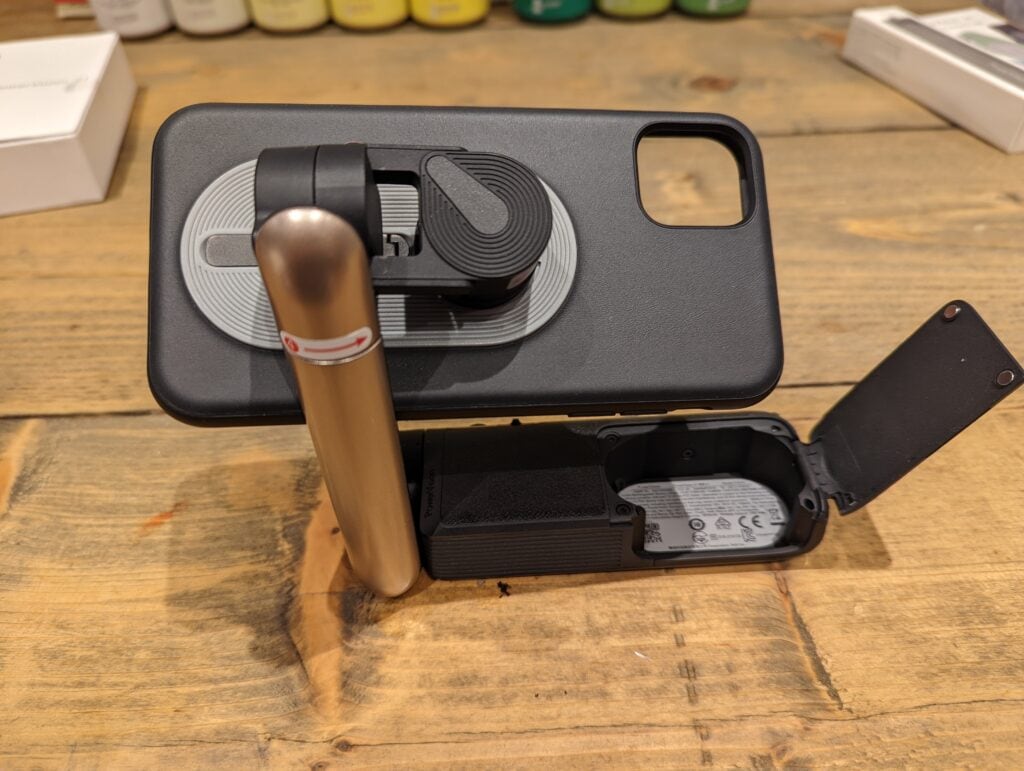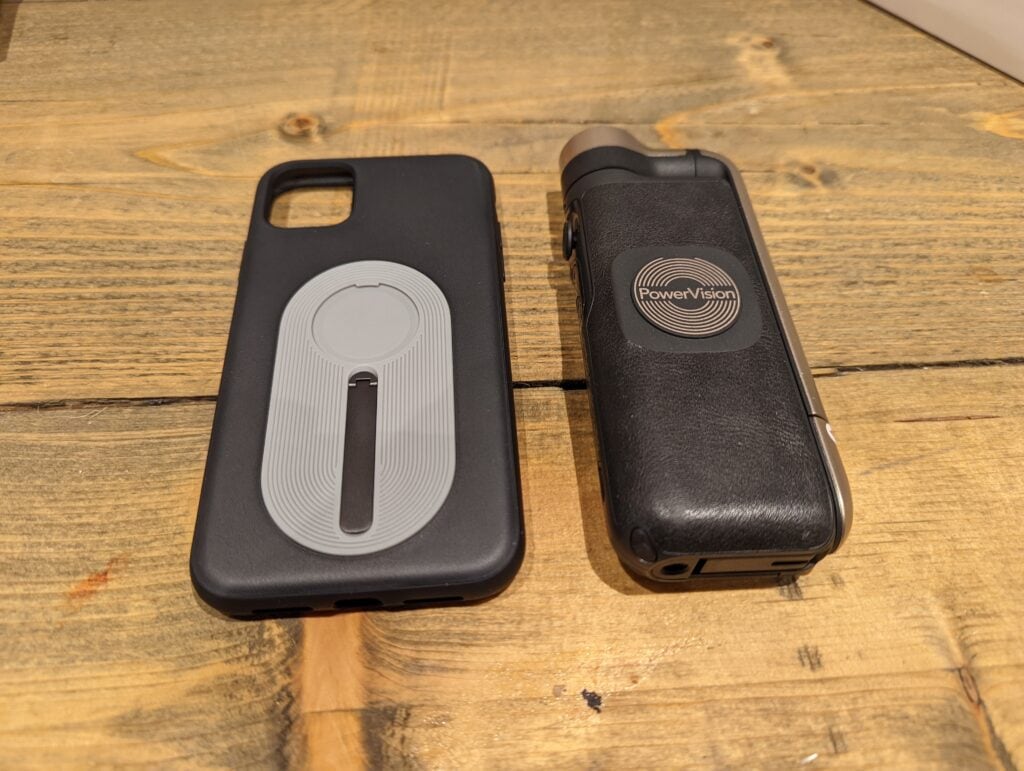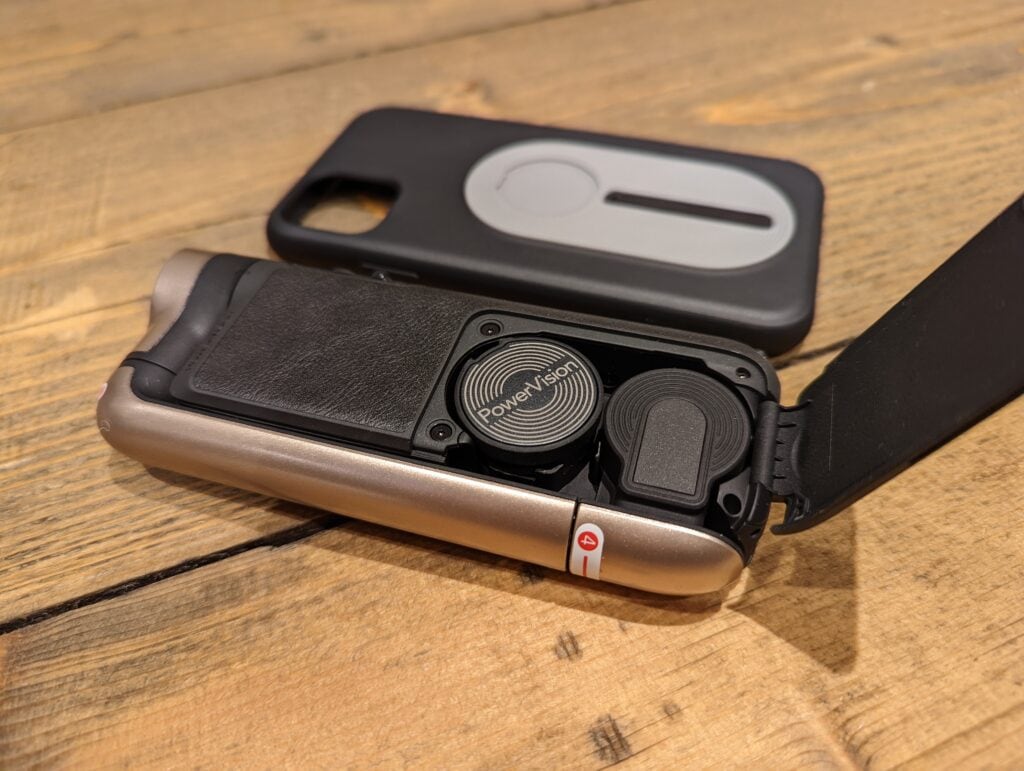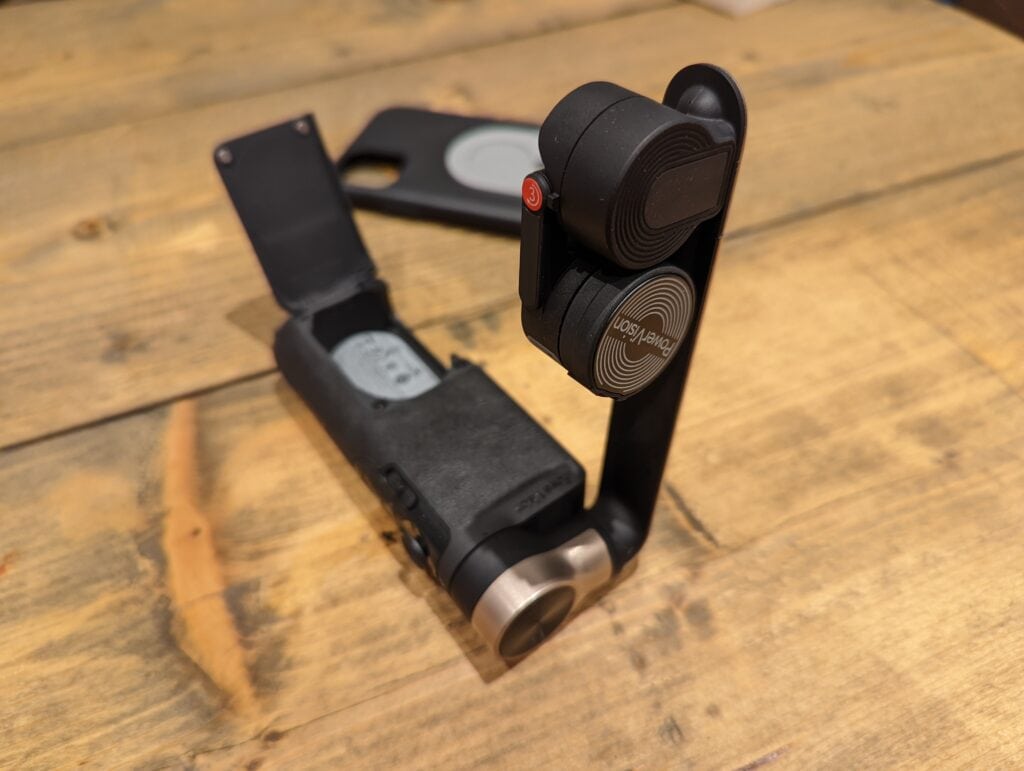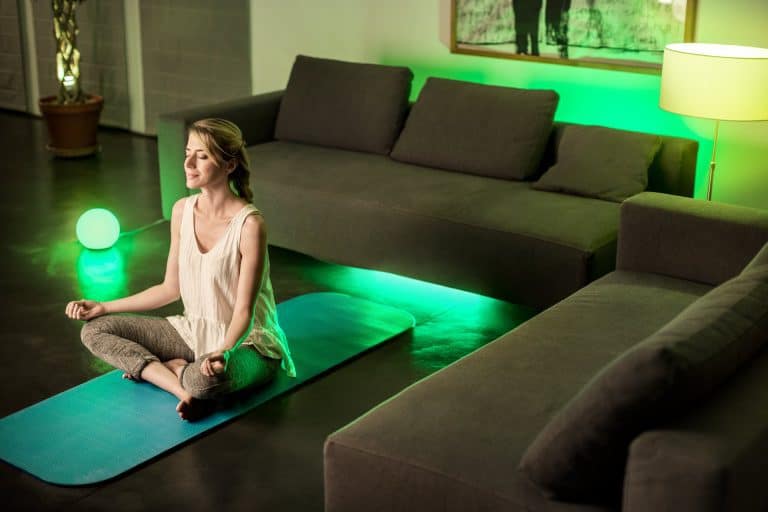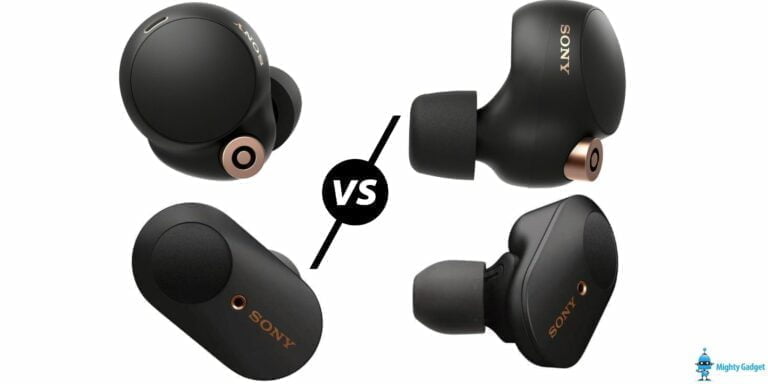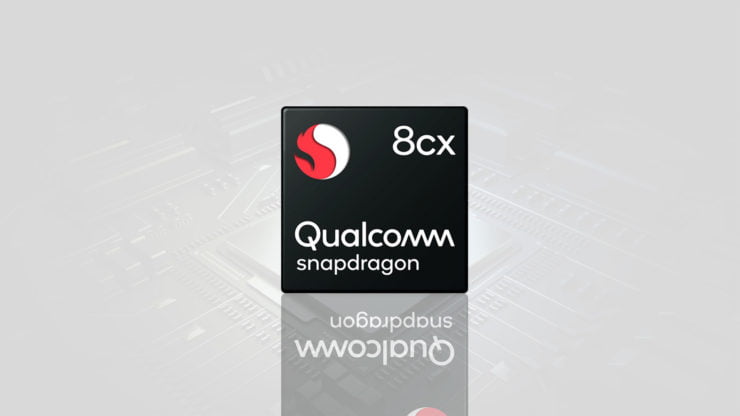Any links to online stores should be assumed to be affiliates. The company or PR agency provides all or most review samples. They have no control over my content, and I provide my honest opinion.
Smartphone gimbals have become popular in recent years, allowing us to achieve smooth cinematic video from our smartphones.
One of the main problems is that they are awkwardly shaped, making most of them impossible to put in your pocket and often taking up a significant amount of space in a small bag.
The PowerVision S1 aims to solve these issues with a design that folds up containing the components within the body itself in a form factor of a mid-sized powerbank.
| Preview | Product | Rating | Price | |
|---|---|---|---|---|

| PowerVision S1 Gimbal Smartphone Stabilizer for iPhone... | Buy on Amazon |
Specification
- Mechanical Range:
- Pan:±150°
- Tilt:±90°
- Roll:-214.8° – 96°
- Max Control Speed: 120°/s
- Folded Dimensions: 141.5 × 58.4 ×27.9mm
- Unfolded Dimensions: 258.5 × 58.4 ×59.3mm
- Weight: 298g
- Compatible Payload Weight: 220±60g
- Compatible Phone Length: 164mm Max.
- Battery: 15 hours, 4120mAh
- Charging: USB-C + Wireless charging for phone (10W output)
- Mounting:
- Phone case: iPhone 8 / XS / 11 / 12 – Pro & Max models (Not iPhone 13, currently)
- Phone case: Samsung Galaxy S21 & S21 Ultra
- Magnetic Universal Phone Mount
Design and Features
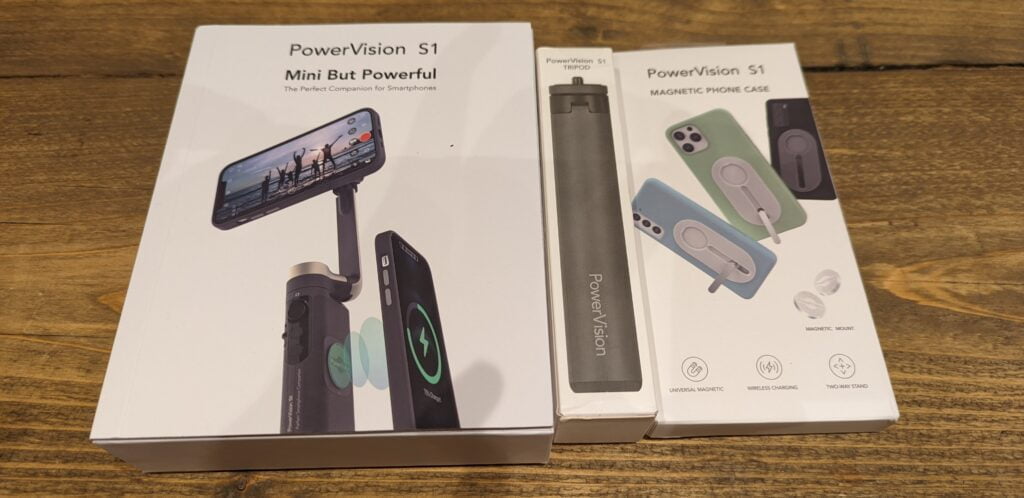

The PowerVision S1 claims to be the worlds smallest smartphone gimbal, and it is impressively small. It is both shorter and narrower than my Pixel 6, but probably over twice as thick. The overall dimensions and weight are quite similar to many mid-sized power banks.
It is easily pocketable, but the overall weight will be quite noticeable. If you are dressed up smart for a night out, it is probably going to feel a bit awkward, but a day out sightseeing wearing jeans and you will likely be fine.
The important part is that it IS pocketable. Unlike every other gimbal, I have used. This is achieved by retracting the main parts of the gimbal arm back into the main body of the gimbal.
Due to this unique design, there are some caveats. The gimbal uses a magnetic mounting system that either requires a dedicated phone case or a universal magnetic mount that sticks on the back of your case/phone
Beyond this unique design, you have the usual sorts of controls on the main body itself.
Then on the base, you have a threaded hole for tripod mounting, but as an added bonus, you get a handy little built-in tripod. The built-in tripod is a bit wobbly, you wouldn’t want to use it outside on a windy day, but indoors on a table, it works perfectly well.
Finally, the PowerVision has a 4120mAh battery which not only gives it an impressive 15-hour battery life but it is also equipped with QI charging, and you provide your phone with a bit of extra juice while out and about.m
Set-Up / Mounting
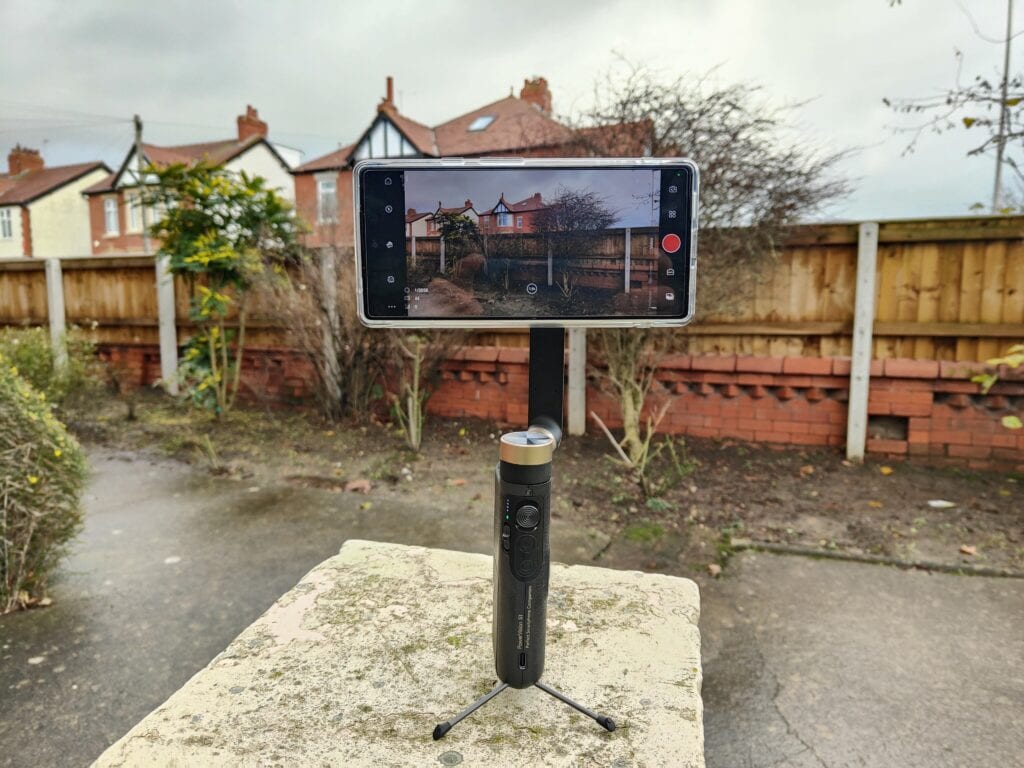

My review sample was sent with an iPhone case, but I use Android. For my initial testing, I used the included magnetic mounts for the case, which have very strong 3M tape, so I was able to stick this onto my Pixel 6 phone case, which turned out surprisingly effective.
I later managed to test it with my partners iPhone.
One thing I realised with this case was that there is a little notch where you mount the case to the gimbal. This seems to be used to make sure the gimbal can orientate the phone properly. With my DIY mounting approach on the Pixel 6 I had to experiment with rotating the phone around a bit.
The gimbal will work without an app, but you will get the best experience from the Vision+S1 app, and when you power up the gimbal, you should be able to see it within the app, allowing you to pair it up. Once paired up, you will likely need to upgrade the firmware.
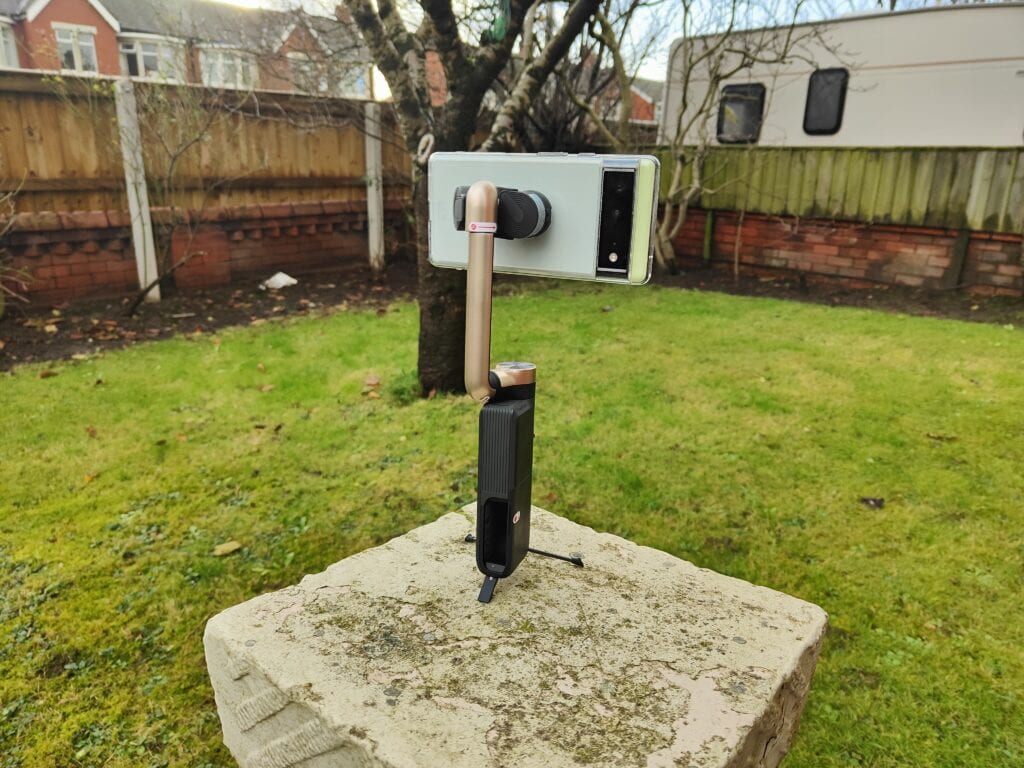

In Use / App
While I had a few problems getting my Pixel 6 to stabilise properly due to the DIY mount, the iPhone 11 worked immediately. If you find that the phone isn’t quite perfect, you can then use the auto-calibration with the camera app.
The app has a wide range of functions, including:
- Panorama
- Photo
- Slow-motion
- Timelapse
Then the normal video option has:
- Follow
- Tilt Locked
- FPV
Performance is generally good. I don’t have extensive gimbal experience, but I’d say it offers a similar level of performance as many affordable to mid-range options.
If you rotate the gimbal too far horizontally, it will force the force to flip around. Similarly, if you make a lot of large dramatic movements, the phone might shift out of position slightly. My testing was mostly exaggerated movements, so I doubt these would affect the performance in real-world usage too much. The up and down tilt is a little bit limited with just ±90° but it is still better than other small gimbals.
The app can do face tracking, and this is where it excels at, making the gimbal and camera auto-track the target as you, or they, move about.
Attaching the tripod, or using in the built-in tripod, combined with the AI tracking, make this excellent for anyone that shoots footage solo, such as vloggers or even for things like virtual meetings.
Alternatively, there is also object tracking, which allows you to select an object by drawing a square around it. This works with both static and moving objects. The overall performance is good, and I found it to be easier to use than manually adjusting the camera with the built-in controls.
Price and Alternative Options
The PowerVision S1 Gimbal is available either directly from PowerVision or on Amazon. It is currently £189 with a 5% voucher off available.
The Zhiyun Smooth X is a good alternative and considerably cheaper. It folds down in half, but the main arm isn’t contained within the unit, so possibly more exposed to damage. It is also only a 2-axis gimbal, so no up and down tilting.
The DJI Osmo is the only other device that has a 3-Axis gimbal that is also pocketable, however this is a gimbal and camera built into one and has an RRP of £329
The DJI OM 5 is likely the best overall alternative, it folds up into a compact form factor and weighs just 292g. The folded dimensions are larger than the PowerVision, and in its folded form, it is probably a bit uncomfortable in the pocket. I also has a shorter battery and no built-in tripod. However, the RRP is £50 cheaper at just £139.
Overall
The PowerVision S1 is an excellent gimbal that is a perfect accessory for any that loves to record video when out and about and is ideal for anyone that travels a lot.
There isn’t really much that competes with this gimbal, nothing else is quite as pocketable, and the other gimbals I found, such as the Zhiyun Smooth X, lack the tilt functionality.
The built-in powerbank and tripod help this be more useful than just a gimbal, again differentiating itself from the crowd.
The downside to this is the relatively high price compared to most other comparable products. The DJI OM 5 very tempting alternative being a well-known brand name with an attractive price, but I think the overall portability of the PowerVision S1 justifies the price premium.
PowerVision S1 Gimbal Review Rating
Summary
The PowerVision S1 is the only gimbal that I am aware of that is comfortably pocketable which makes it much easier to carry with you when travelling. Performance is good and you have the added bonus of a built-in tripod and powerbank.
Pros
- Incredibly compact gimbal
- Multifunction with tripod and powerbank
- Good performance
Cons
- High price compared to many other brands
I am James, a UK-based tech enthusiast and the Editor and Owner of Mighty Gadget, which I’ve proudly run since 2007. Passionate about all things technology, my expertise spans from computers and networking to mobile, wearables, and smart home devices.
As a fitness fanatic who loves running and cycling, I also have a keen interest in fitness-related technology, and I take every opportunity to cover this niche on my blog. My diverse interests allow me to bring a unique perspective to tech blogging, merging lifestyle, fitness, and the latest tech trends.
In my academic pursuits, I earned a BSc in Information Systems Design from UCLAN, before advancing my learning with a Master’s Degree in Computing. This advanced study also included Cisco CCNA accreditation, further demonstrating my commitment to understanding and staying ahead of the technology curve.
I’m proud to share that Vuelio has consistently ranked Mighty Gadget as one of the top technology blogs in the UK. With my dedication to technology and drive to share my insights, I aim to continue providing my readers with engaging and informative content.
Last update on 2024-04-20 / Affiliate links / Images from Amazon Product Advertising API

